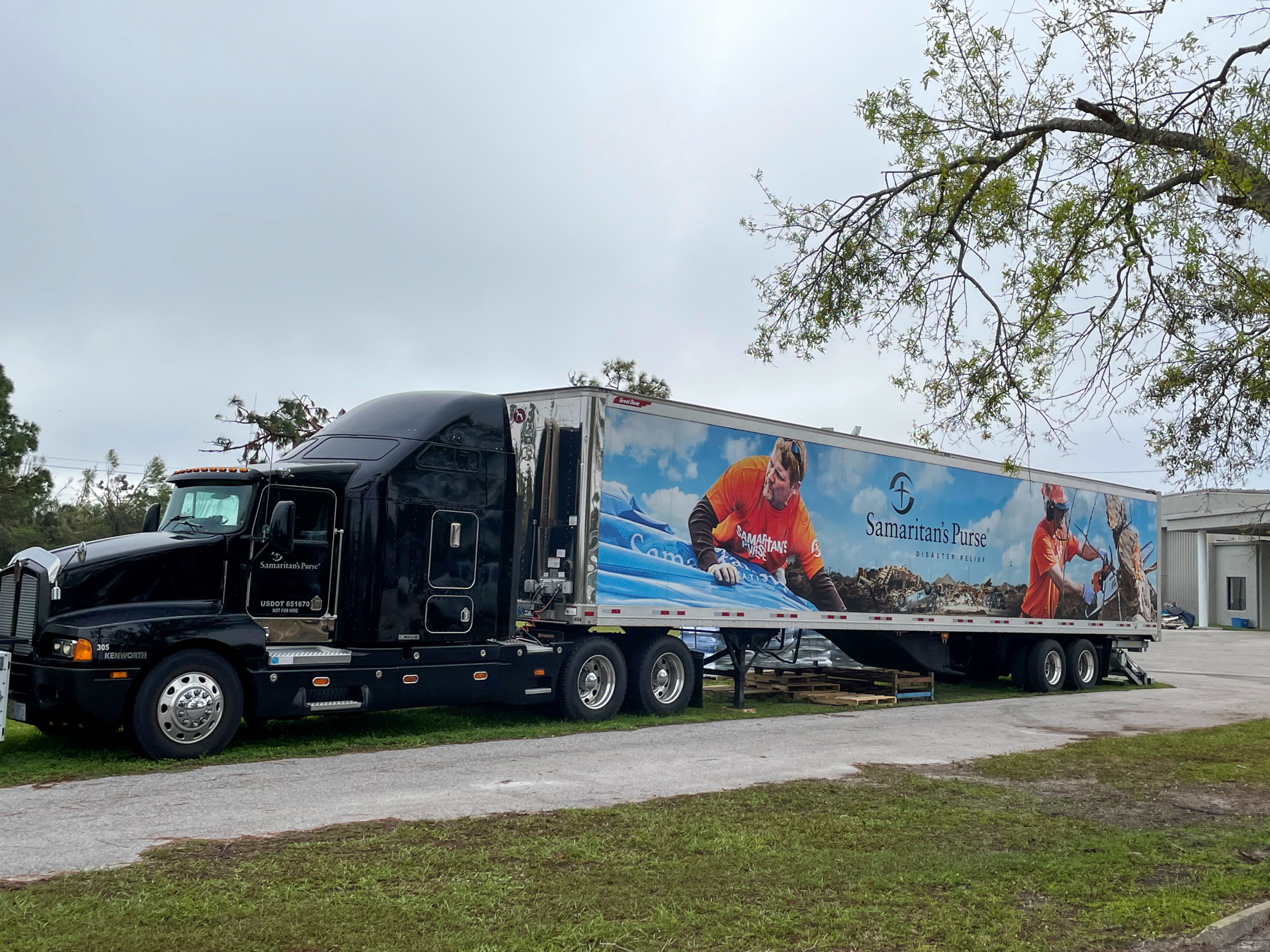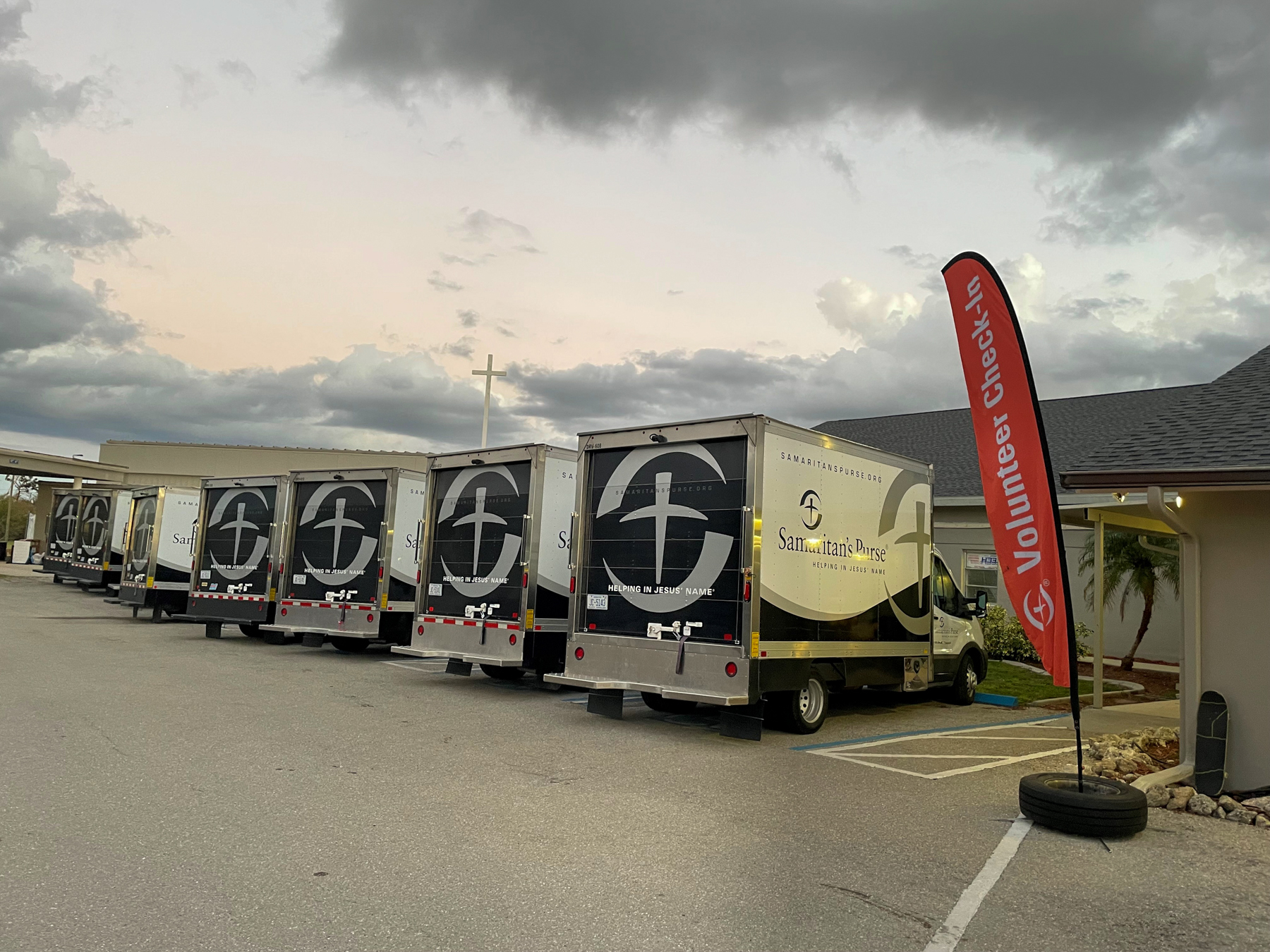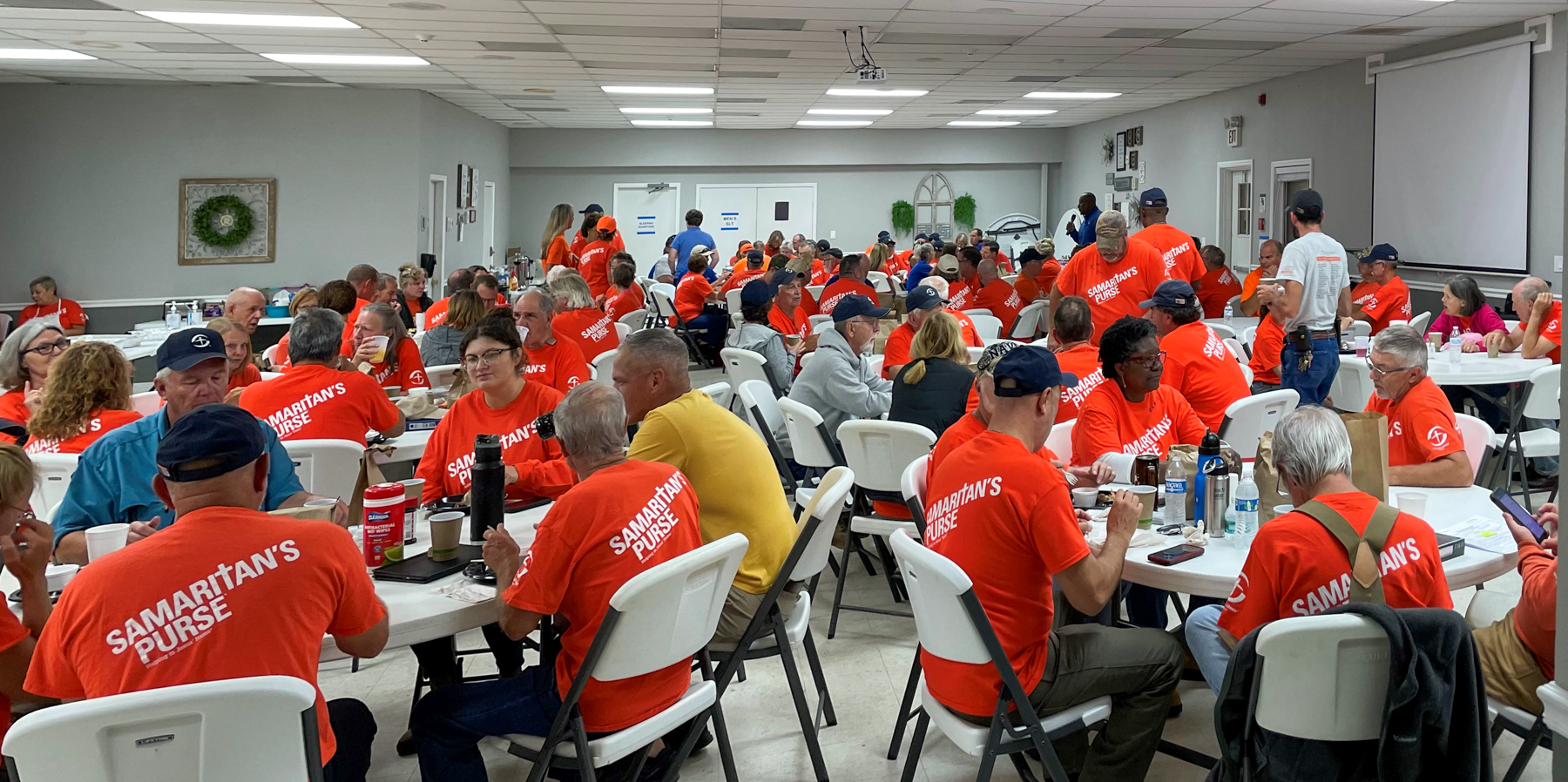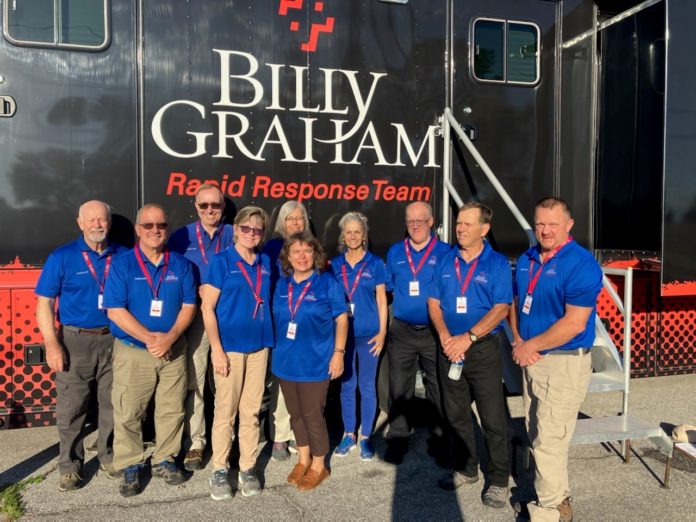
Editor’s note: Dr. David Hollar, associate professor in the Department of Community Medicine in Mercer University’s School of Medicine, shares below his recent experience as a lay chaplain helping with Hurricane Ian relief efforts in Florida.
I recently had the opportunity to volunteer with Hurricane Ian relief efforts in Florida, serving alongside 10 other lay chaplains with the Billy Graham Rapid Response Team and over 200 Samaritan’s Purse disaster relief staff and volunteers.
From Oct. 23-30, I was based at the Calvary Baptist and West Coast churches in Englewood, serving that community and surrounding areas from Venice to Port Charlotte. I drove there from Macon on Oct. 23 and served all week.
As a chaplain, my role was to provide spiritual and emotional support to homeowners and the Samaritan’s Purse volunteers, as well as reach out to other affected storm victims in the neighborhoods. I have been a chaplain with this organization since 2014 and have volunteered with over a dozen relief efforts, including for Hurricanes Harvey, Laura, Michael and Matthew, across the Southern states.
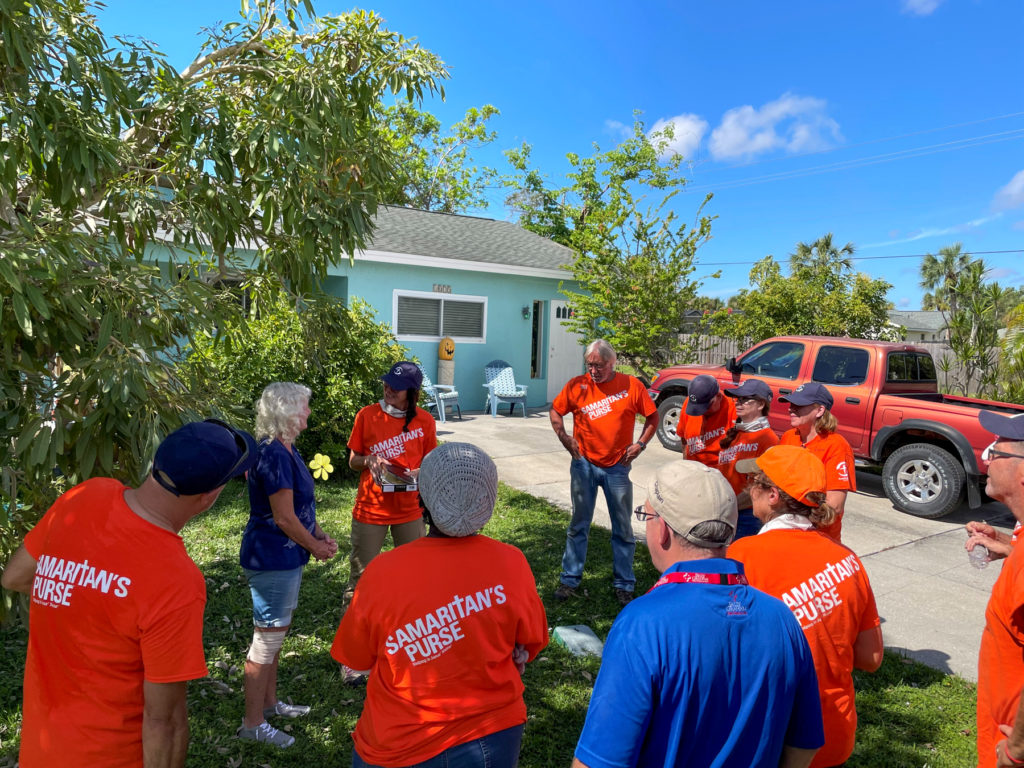
Chaplains worked in pairs, alongside two Samaritan’s Purse teams of about a dozen volunteers each. I worked with a pastor from Iowa, talking with and providing resources to homeowners affected by the hurricane.
The Samaritan’s Purse volunteers performed tasks such as roof tarping; “mud-outs,” which involved removing flooring and drywall; spraying mold suppressant; and removing yard debris. All of this was done free-of-charge and made the house contractor-ready for repairs.
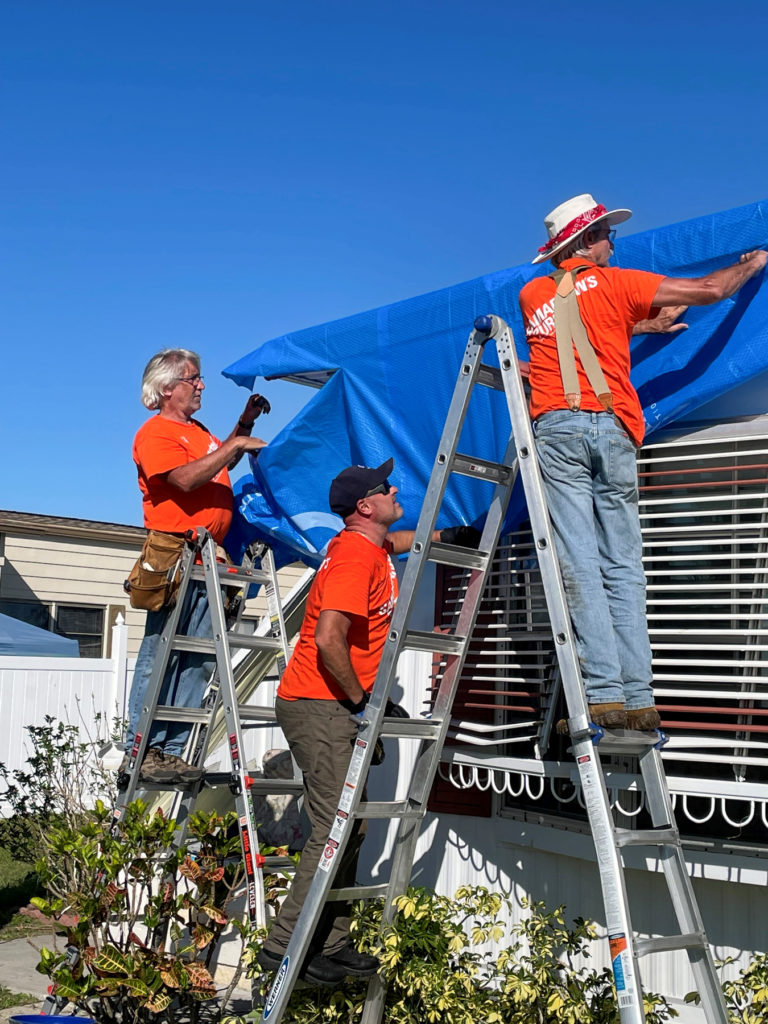
A typical day started at 6 a.m., with breakfast at 6:30 a.m., daily devotional, a training session for new volunteers, then team meetings prior to leaving the church for each worksite. The day wrapped up with a chaplain team meeting and reports around 5 p.m., dinner at 6 p.m., share time among the volunteers, and lights out at 10 p.m.
The two churches provided separate women’s and men’s areas to set up inflatable mattresses or cots for sleeping, and Samaritan’s Purse provided shower trailers. Donations stocked the church kitchen for all our meals.
Many homeowners lacked insurance to cover home repairs. Some homes were assessed to be demolished, and those who could make repairs often were faced with out-of-pocket costs between $50,000 and $100,000. I talked with several homeowners who were living in tents or with relatives and did not know what they would do.
Englewood is mostly a retirement community, and many homes were upscale single-level modular homes that were vulnerable to high winds. About half of the homes were winter homes for couples from the Northeastern U.S., Great Lakes and Canada.
The most challenging visit for my team was when we visited an older couple for two hours one morning. This couple had some hurricane damage, but they were suffering from the brutal murder of their middle-aged son that had occurred the previous weekend.
We chaplains provided consolation to this couple, who were in great pain but also showed great faith in God. They talked about how much neighbors were helping each other, with some affected homeowners even volunteering with Samaritan’s Purse during the week to work on other homes in the community.

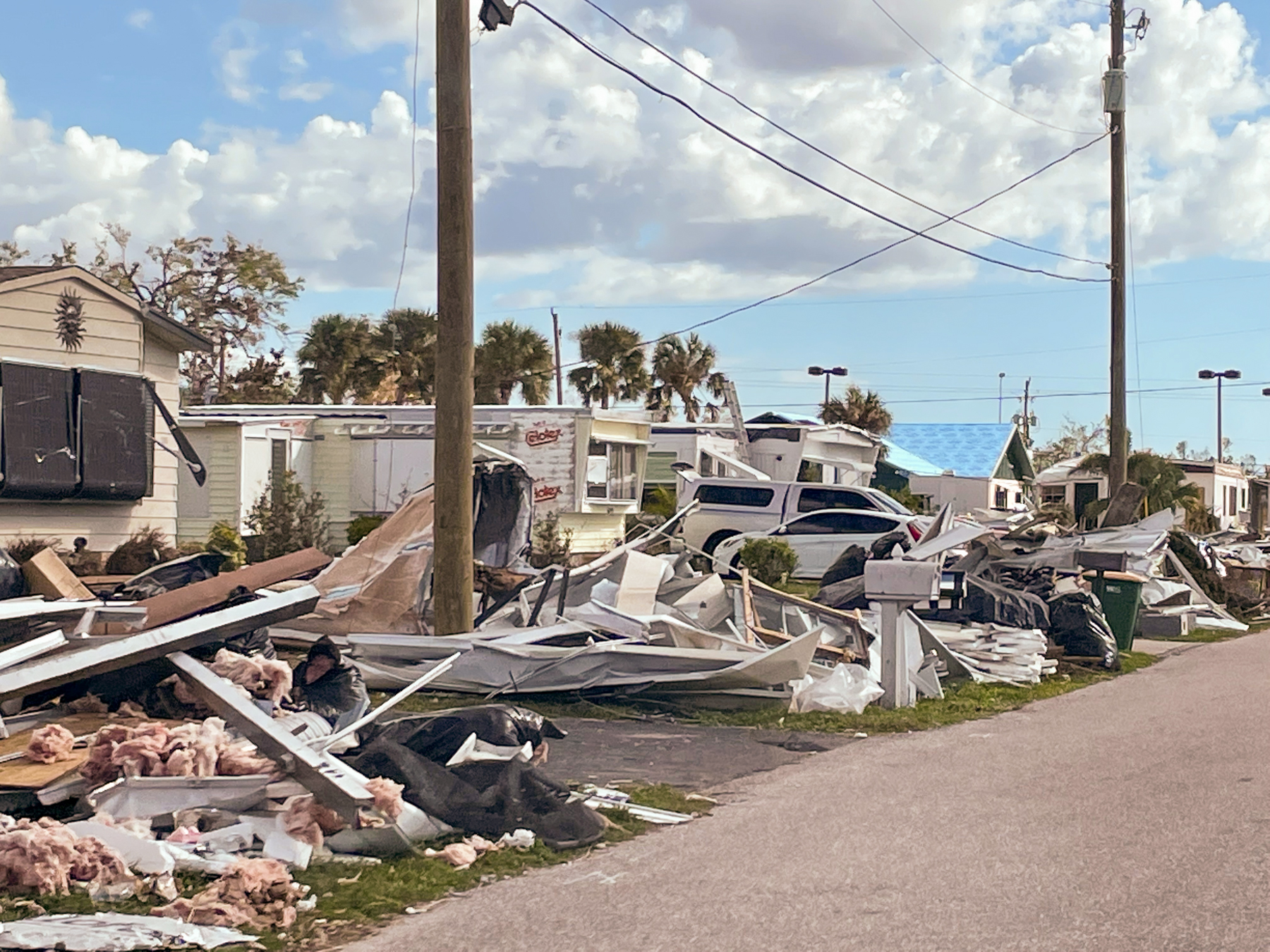
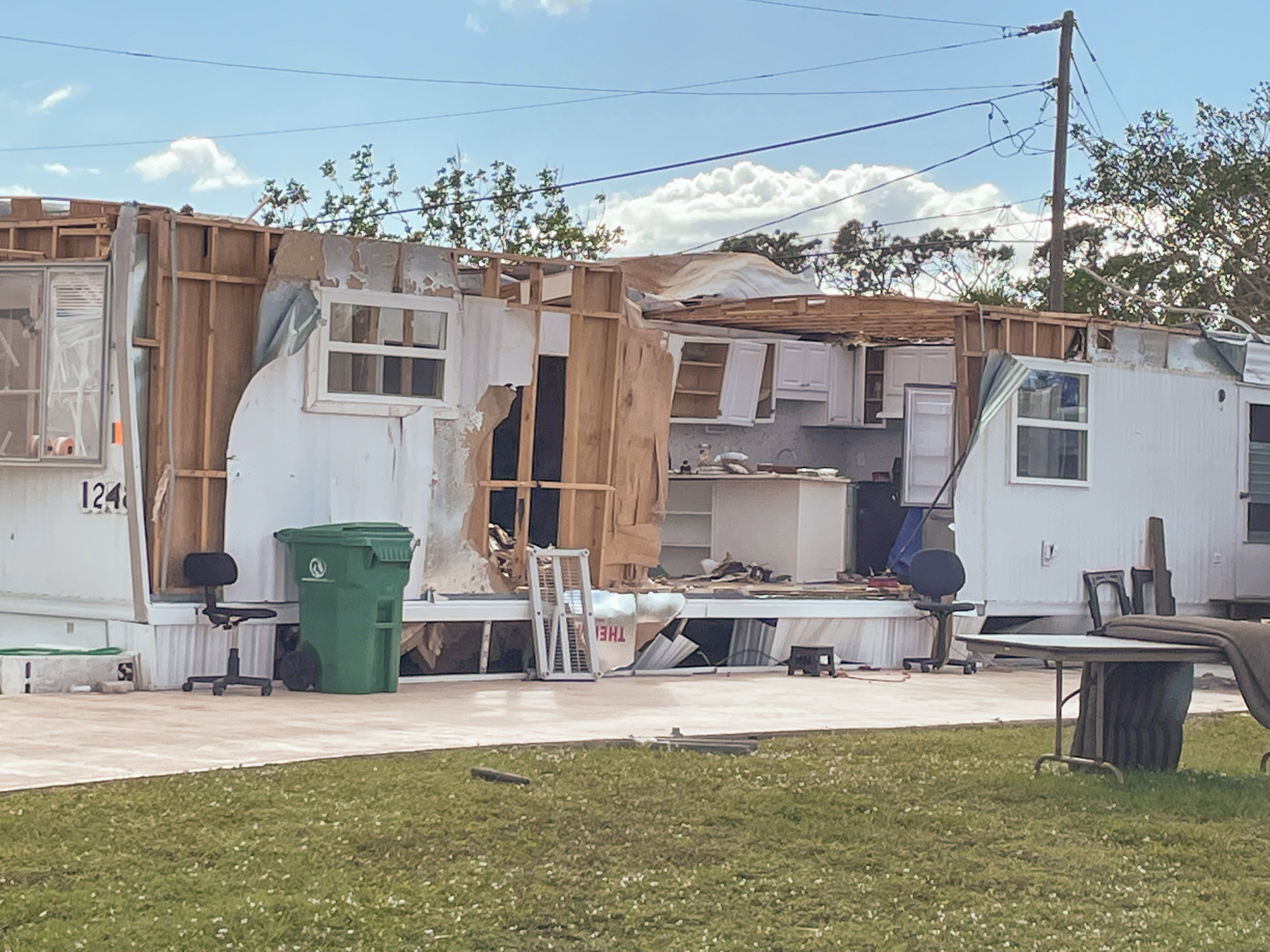
I volunteered one month after Hurricane Ian’s landfall near Port Charlotte, and there were still over 3,000 homes that needed repair and debris removal. Samaritan’s Purse worked on nearly 500 homes in October. It is likely these disaster relief sites will be necessary well into early 2023.
The Rapid Response Team was established by the Rev. Franklin Graham following 9/11 and has responded to natural and man-made disasters worldwide since then. It operates alongside Samaritan’s Purse, founded in 1970, under the auspices of the Billy Graham Evangelistic Association.
There are over 2,500 Rapid Response Team chaplains worldwide, mostly in North America, Europe and Australia. Chaplains must commit to at least one week of service every two years, undergo a background check, and complete “Sharing Hope in Crisis” training and at least two International Critical Incident Stress Management Foundation courses in topics such as grief counseling, suicide prevention and psychological counseling.
